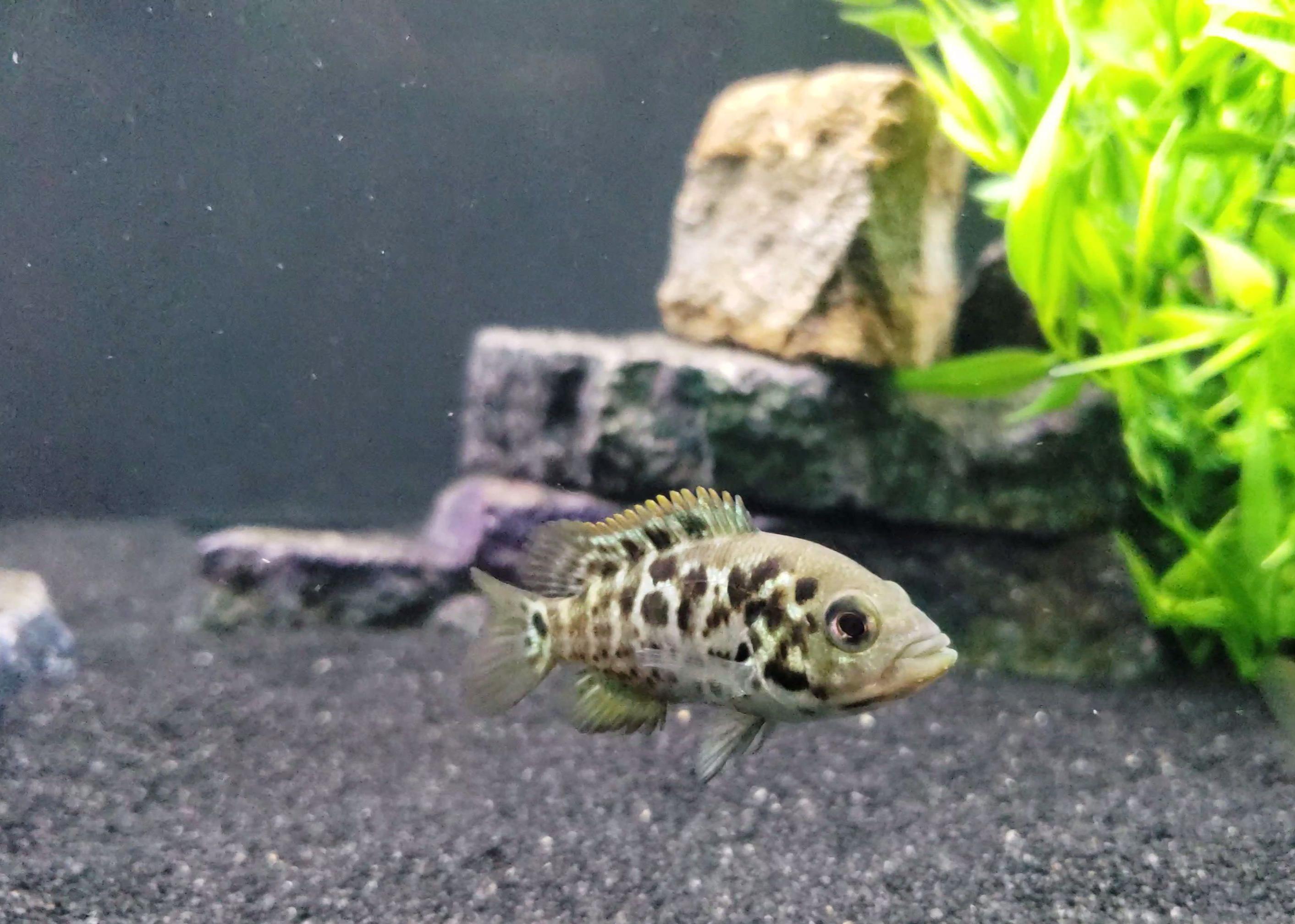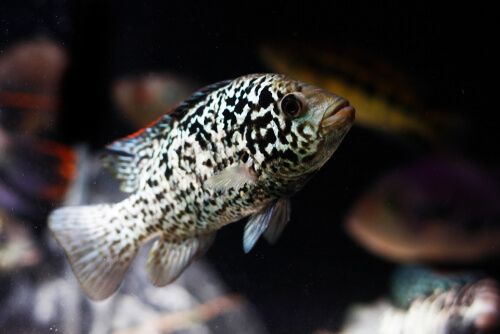The Cuban cichlid, also known as the Pearl cichlid, is a popular freshwater fish species that is native to the Caribbean island of Cuba. They are a popular choice for aquarium enthusiasts due to their vibrant colors, unique patterns, and interesting behaviors.
Physical Appearance
The Cuban cichlid is a medium-sized fish species that can grow up to 10 inches in length. They have a rounded body shape with a pointed head and a sloping forehead. Their coloration varies between individuals but generally includes shades of silver, blue, green, and gold. They also have a series of black spots or stripes on their body, which are more prominent in males.
Behavior
Cuban cichlids are active and social fish that are known for their territorial behavior. They are typically found in pairs or small groups in the wild and prefer to establish a territory to call their own. They are known to aggressively defend their territory against other fish species, including other Cuban cichlids. This behavior can make them challenging to keep with other fish species in a community aquarium setting.
Habitat and Distribution
As their name suggests, Cuban cichlids are native to the island of Cuba, where they can be found in freshwater rivers, streams, and ponds. They prefer warm, slow-moving waters with plenty of vegetation and shelter, such as rocks, logs, and plants.
In recent years, the Cuban cichlid has been introduced to other parts of the world, including Florida, where they have become an invasive species. They have been introduced to Florida’s waterways through accidental releases from aquariums or intentional releases by hobbyists. This has led to concerns about the potential impact of the Cuban cichlid on native fish species and ecosystems in Florida.
Feeding
In the wild, Cuban cichlids are omnivores, feeding on a variety of plant and animal matter. They primarily feed on small invertebrates such as snails, insects, and crustaceans, as well as algae and plant matter.
In captivity, Cuban cichlids will accept a variety of commercial fish foods, including flakes, pellets, and frozen foods such as brine shrimp and bloodworms. It is important to provide a varied diet to ensure that they receive all the necessary nutrients.
Breeding
Cuban cichlids are relatively easy to breed in captivity, and breeding can occur year-round with the right conditions. To encourage breeding, it is recommended to provide a separate breeding tank with plenty of hiding places and vegetation.
During the breeding process, the male will dig a nest in the substrate, where the female will deposit her eggs. The male will then fertilize the eggs and guard them until they hatch. After hatching, the fry will remain in the nest for several days until they are large enough to swim freely.
Conclusion
The Cuban cichlid is a popular and interesting freshwater fish species that is suitable for experienced aquarium enthusiasts. Their unique patterns, vibrant colors, and territorial behavior make them a fascinating addition to any aquarium. However, it is important to remember that they can be aggressive towards other fish species and may not be suitable for a community aquarium setting. With proper care and attention, the Cuban cichlid can provide years of enjoyment and fascination for aquarium hobbyists.







![]()
